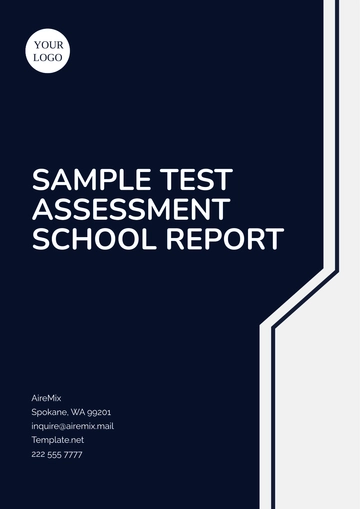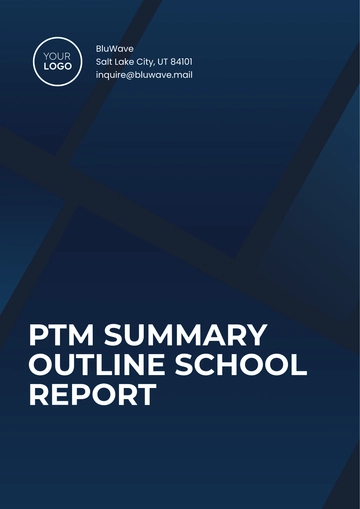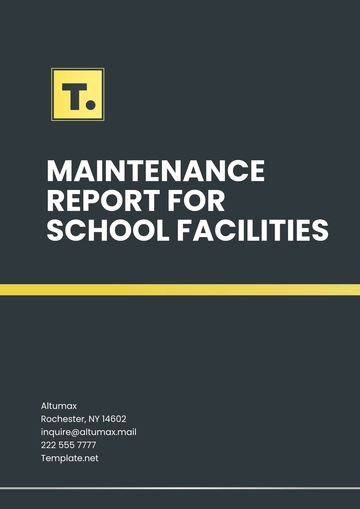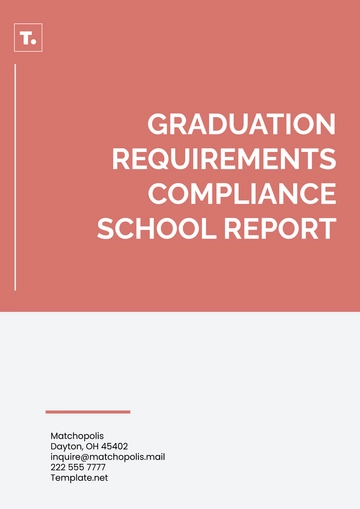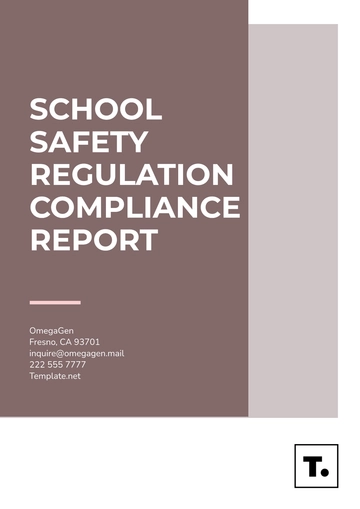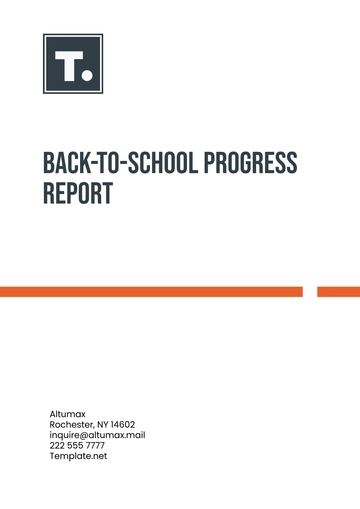Free High School Lab Report
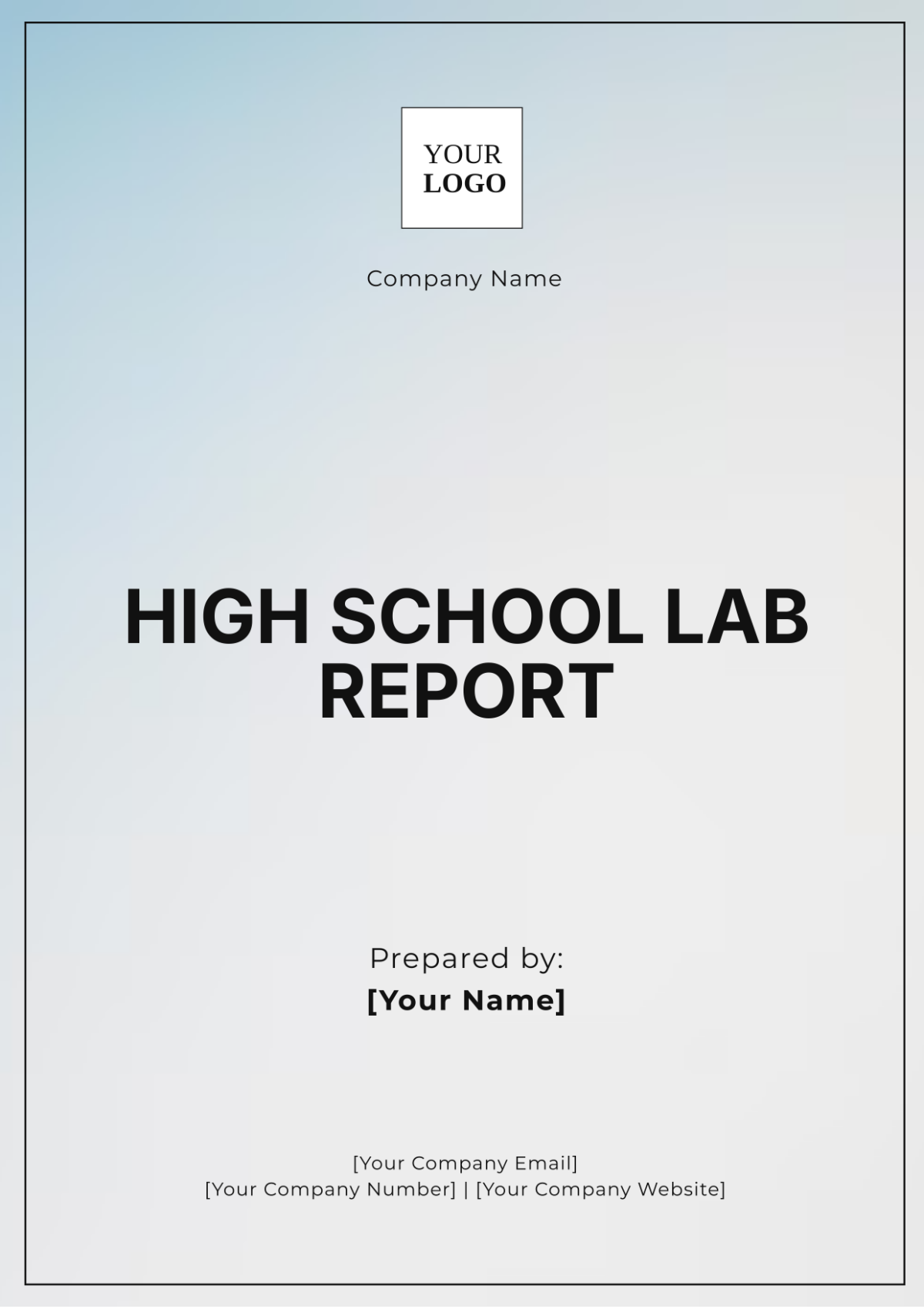
Title: Effect of Temperature on Reaction Rate
Submitted by: [Your Name]
Instructor: [Instructor's Name]
Date: [Submission Date]
Abstract
This lab report examines the effect of temperature on the reaction rate between sodium thiosulfate and hydrochloric acid. The aim was to determine how varying temperatures influence the speed of this chemical reaction. By conducting experiments at different temperatures, we observed changes in reaction time and analyzed how temperature affects the rate of reaction. Results indicated a direct relationship between temperature and reaction rate, confirming the hypothesis that higher temperatures increase reaction rates.
Introduction
The rate of a chemical reaction is influenced by several factors, including temperature, concentration, and the presence of catalysts. In this experiment, we focus on temperature as a variable affecting reaction rates. Sodium thiosulfate reacts with hydrochloric acid to form sulfur dioxide, water, and sodium chloride, and the rate at which this reaction occurs can be measured by the time taken for the reaction mixture to turn opaque due to the formation of sulfur.
Objective
To investigate the effect of temperature on the rate of reaction between sodium thiosulfate and hydrochloric acid.
Hypothesis
It is hypothesized that increasing the temperature will increase the rate of reaction. This is based on the principle that higher temperatures provide reactant molecules with more energy, leading to more frequent and energetic collisions.
Materials and Methods
Materials
Sodium thiosulfate solution (0.1 M)
Hydrochloric acid solution (0.1 M)
Distilled water
Thermometer
Beakers (100 mL)
Measuring cylinders
Stopwatch
Conical flasks
Ice bath
Hot plate
Methods
Preparation: Prepare sodium thiosulfate and hydrochloric acid solutions at the desired concentrations. Ensure that all glassware is clean and dry.
Temperature Setting: Set up four different temperature conditions:
10°C (Ice bath)
20°C (Room temperature)
30°C (Warm water bath)
40°C (Hot plate)
Procedure:
Measure 50 mL of sodium thiosulfate solution into a conical flask.
Add 10 mL of hydrochloric acid to the flask and start the stopwatch immediately.
Observe the reaction and stop the stopwatch when the solution turns opaque.
Record the time taken for the solution to turn opaque.
Repeat the experiment three times for each temperature to ensure accuracy.
Data Collection: Record the time taken for each trial in a table.
Results
Data Table
Temperature (°C) | Trial 1 (s) | Trial 2 (s) | Trial 3 (s) | Average Time (s) |
|---|---|---|---|---|
10 | 98 | 101 | 95 | 98 |
20 | 53 | 56 | 55 | 54.7 |
30 | 32 | 30 | 31 | 31 |
40 | 22 | 21 | 23 | 22 |
Graphical Representation
A line graph is plotted to show the relationship between temperature and the average reaction time. The graph illustrates that as the temperature increases, the average reaction time decreases, indicating an increase in reaction rate.
Discussion
The results confirm that temperature has a significant effect on the reaction rate between sodium thiosulfate and hydrochloric acid. As hypothesized, higher temperatures resulted in shorter reaction times. This can be explained by the increased kinetic energy of the reactant molecules at higher temperatures, leading to more frequent and effective collisions.
Analysis
At 10°C, the reaction was the slowest, with an average time of 98 seconds. This suggests that the molecules had lower kinetic energy and fewer successful collisions.
At 20°C, the reaction rate increased, with an average time of 54.7 seconds. This shows a noticeable improvement in reaction speed compared to the lower temperature.
At 30°C, the average time further decreased to 31 seconds, indicating a faster reaction rate.
At 40°C, the reaction was the fastest, with an average time of 22 seconds. This supports the hypothesis that higher temperatures significantly enhance reaction rates.
Sources of Error
Possible sources of error include:
Variability in initial temperature settings.
Inaccurate measurement of reactants.
Inconsistent timing of the reaction endpoint.
Conclusion
The experiment successfully demonstrated that temperature affects the rate of reaction between sodium thiosulfate and hydrochloric acid. Higher temperatures result in faster reactions, as evidenced by the decreasing reaction times with increasing temperature. This experiment reinforces the importance of temperature in chemical kinetics and provides a clear example of how temperature influences reaction rates.
References
"Chemistry: Principles and Reactions" by William L. Masterton and Cecile N. Hurley.
"The Science of Chemistry: An Introduction" by Gary L. McLoud.
Lab Report Templates @ Template.net
- 100% Customizable, free editor
- Access 1 Million+ Templates, photo’s & graphics
- Download or share as a template
- Click and replace photos, graphics, text, backgrounds
- Resize, crop, AI write & more
- Access advanced editor
Streamline your high school lab assignments with the High School Lab Report Template, available at Template.net. This customizable and downloadable template is tailored to meet the academic requirements of high school science courses. Editable in our AI Editor Tool, it helps students produce clear, concise, and printable lab reports that accurately document their experiments and findings, making the reporting process both efficient and educational.
You may also like
- Sales Report
- Daily Report
- Project Report
- Business Report
- Weekly Report
- Incident Report
- Annual Report
- Report Layout
- Report Design
- Progress Report
- Marketing Report
- Company Report
- Monthly Report
- Audit Report
- Status Report
- School Report
- Reports Hr
- Management Report
- Project Status Report
- Handover Report
- Health And Safety Report
- Restaurant Report
- Construction Report
- Research Report
- Evaluation Report
- Investigation Report
- Employee Report
- Advertising Report
- Weekly Status Report
- Project Management Report
- Finance Report
- Service Report
- Technical Report
- Meeting Report
- Quarterly Report
- Inspection Report
- Medical Report
- Test Report
- Summary Report
- Inventory Report
- Valuation Report
- Operations Report
- Payroll Report
- Training Report
- Job Report
- Case Report
- Performance Report
- Board Report
- Internal Audit Report
- Student Report
- Monthly Management Report
- Small Business Report
- Accident Report
- Call Center Report
- Activity Report
- IT and Software Report
- Internship Report
- Visit Report
- Product Report
- Book Report
- Property Report
- Recruitment Report
- University Report
- Event Report
- SEO Report
- Conference Report
- Narrative Report
- Nursing Home Report
- Preschool Report
- Call Report
- Customer Report
- Employee Incident Report
- Accomplishment Report
- Social Media Report
- Work From Home Report
- Security Report
- Damage Report
- Quality Report
- Internal Report
- Nurse Report
- Real Estate Report
- Hotel Report
- Equipment Report
- Credit Report
- Field Report
- Non Profit Report
- Maintenance Report
- News Report
- Survey Report
- Executive Report
- Law Firm Report
- Advertising Agency Report
- Interior Design Report
- Travel Agency Report
- Stock Report
- Salon Report
- Bug Report
- Workplace Report
- Action Report
- Investor Report
- Cleaning Services Report
- Consulting Report
- Freelancer Report
- Site Visit Report
- Trip Report
- Classroom Observation Report
- Vehicle Report
- Final Report
- Software Report




